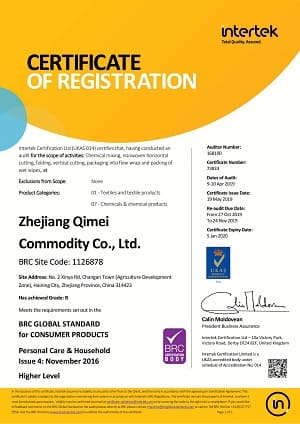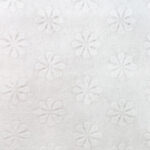نوع القماش المنسوج من سبونليس: بوليستر، مادة مزيج بولي فيسكوز، ألياف الخيزران، لب الخشب (قابل للغسل)، القطن أو ألياف الصويا (قابلة للتحلل)
مسطحة أو محكم (الشعار الخاص بك متاح)
جراماج: 30-80 جم
1/10/30/80/100/120/160 قطعة/الحزمة
مناديل صغيرة: هذه عادة ما تكون حوالي 4 بوصات في 4 بوصات (10 سم في 10 سم) أو أصغر. قد تكون مصممة للاستخدام على الوجه أو اليدين أو غيرها من المناطق الصغيرة.
مناديل متوسطة: هذه عادة ما تكون حوالي 6 بوصات في 6 بوصات (15 سم في 15 سم) أو أكبر. قد تكون مصممة للاستخدام في مناطق أكبر من الجسم ، مثل الذراعين أو الأرجل أو الظهر.
مناديل كبيرة: هذه عادة ما تكون أكثر من 10 بوصات في 10 بوصات (25 سم في 25 سم) أو أكبر. قد تكون مصممة للاستخدام في البيئات الصناعية ، لتنظيف المعدات أو الأسطح الكبيرة.
1. كيس بلاستيكي قابل لإعادة الإغلاق: هذا هو النوع الأكثر شيوعًا من عبوات المناديل المبللة. إنها مصنوعة من البلاستيك ولها شريط قابل للإغلاق في الأعلى للحفاظ على المناديل نظيفة ورطبة.
2. حاوية الغطاء العلوي: يتكون هذا النوع من العبوات من وعاء بلاستيكي بغطاء يمكن فتحه وإغلاقه للوصول إلى المناديل.
3. عبوة ناعمة بغطاء بلاستيكي قابل للقلب: على غرار حاوية الغطاء العلوي ، تأتي هذه العبوة في عبوة ناعمة ولها غطاء بلاستيكي قابل للقلب لسهولة الوصول إليها.
4. موزع منبثق: يتميز هذا النوع من العبوات بآلية توزيع منبثقة تسحب مسحًا واحدًا في كل مرة.
5. حزمة السفر: عبوة صغيرة مصممة للاستخدام أثناء التنقل ، وغالبًا ما تأتي مع إغلاق بلاستيكي.
6. عبوات أحادية الاستخدام: تأتي هذه المناديل المبللة في عبوات صغيرة محكمة الغلق تكون ملائمة للسفر أو الأنشطة الخارجية.
7. كيس إعادة التعبئة: تم تصميم هذه العبوة ذات الحجم الأكبر لإعادة تعبئة حاويات المناديل المبللة الأخرى ، وعادة ما يكون بها فتحة قابلة لإعادة الإغلاق.
الماء: الماء عادة ما يكون العنصر الرئيسي في مناديل خالية من الزيت ، حيث يوفر قاعدة للمحلول المستخدم لتنظيف الجلد.
الفاعل بالسطح: تستخدم السطحي لتحطيم الزيت والأوساخ على الجلد ، مما يسمح بمسحه بعيدا. تشمل السطحي الشائع المستخدمة في مناديل خالية من الزيت كبريتات لوريل الصوديوم وكبريتات الصوديوم لوريث وكوكاميدوبيل بيتين.
الجليسرين: الجليسرين هو سكان يساعد على ترطيب الجلد ومنعه من التجفيف.
المواد الحافظة: يمكن إضافة المواد الحافظة إلى مناديل خالية من النفط لمنع النمو البكتيري وإطالة مدة الصلاحية للمنتج. تشمل المواد الحافظة المشتركة المستخدمة في منتجات مستحضرات التجميل الفينوكسي إيثانول ، ميثيل بارابين ، وبروبيل بارابين.
العطر: يمكن إضافة العطر إلى مناديل خالية من النفط لمنحهم رائحة ممتعة. ومع ذلك ، قد يكون بعض الأشخاص حساسين للعطور وقد يفضلون المنتجات الخالية من العطور.
المكونات الأخرى: تشمل المكونات الأخرى التي قد يتم تضمينها في صياغة مناديل خالية من الزيت المطريات ، مضادات الأكسدة ، وعوامل متوقعة الجلد.
ISO 9001: تركز هذه الشهادة على أنظمة إدارة الجودة وهي معترف بها على نطاق واسع على مستوى العالم. إنه يضمن أن لدى الشركة المصنعة نظام فعال لإدارة الجودة لإنتاج منتجات عالية الجودة باستمرار.
ISO 22716: هذه الشهادة خاصة بصناعة مستحضرات التجميل وتغطي ممارسات التصنيع الجيدة (GMPs) لمنتجات مستحضرات التجميل. إنه يضمن أن الشركة المصنعة قد نفذت ممارسات النظافة المناسبة وضغط الجودة لضمان سلامة وفعالية منتجاتها.
شهادة GMP: تركز هذه الشهادة أيضًا على ضمان تصنيع المنتجات باستمرار وتلبية معايير الجودة. يمكن أن يكون شرطا في بعض البلدان أو المناطق.
تسجيل إدارة الأغذية والعقاقير (FDA): إذا كانت الشركة المصنعة تبيع مناديلها الخالية من النفط في الولايات المتحدة ، فقد يحتاجون إلى التسجيل في إدارة الغذاء والدواء (FDA). يشير هذا التسجيل إلى أن الشركة المصنعة متوافقة مع لوائح FDA للمنتجات التجميلية.
تنظيم مستحضرات التجميل في الاتحاد الأوروبي: إذا كانت الشركة المصنعة تبيع مناديلها الخالية من النفط في الاتحاد الأوروبي ، فيجب عليها الامتثال لتنظيم مستحضرات التجميل في الاتحاد الأوروبي. تحدد هذه اللائحة متطلبات السلامة ووضع العلامات وتسويق منتجات مستحضرات التجميل داخل الاتحاد الأوروبي.












